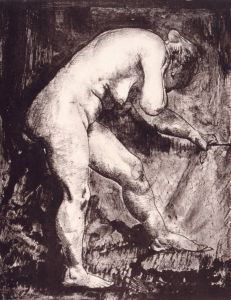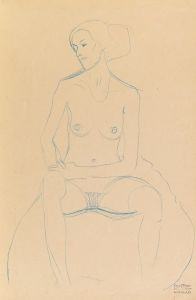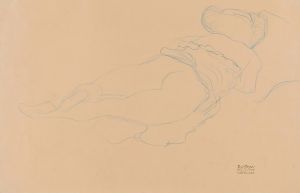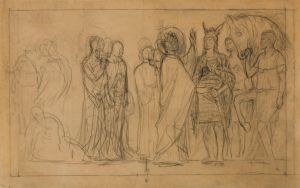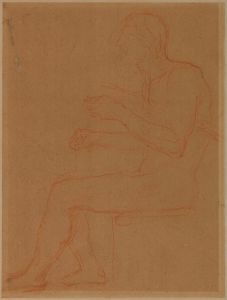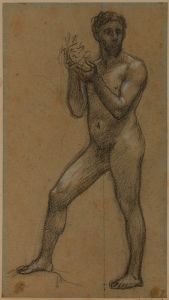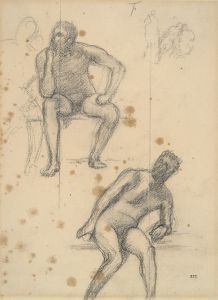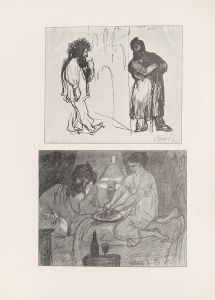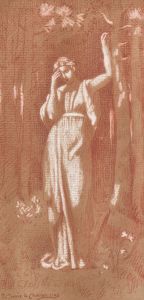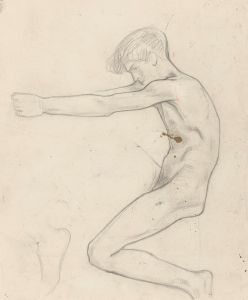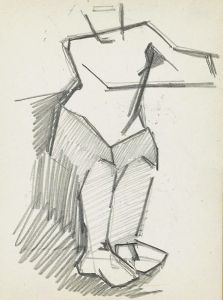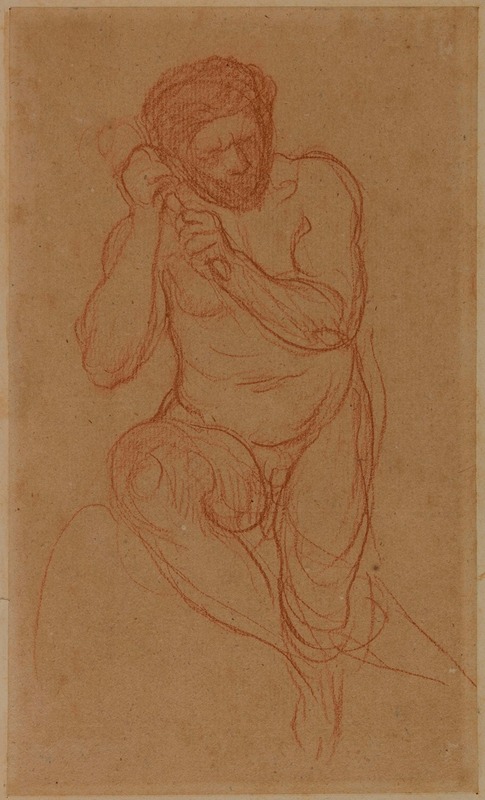
Homme nu assis, de face, tenant un objet des deux mains vers la gauche
A hand-painted replica of Pierre Puvis de Chavannes’s masterpiece Homme nu assis, de face, tenant un objet des deux mains vers la gauche, meticulously crafted by professional artists to capture the true essence of the original. Each piece is created with museum-quality canvas and rare mineral pigments, carefully painted by experienced artists with delicate brushstrokes and rich, layered colors to perfectly recreate the texture of the original artwork. Unlike machine-printed reproductions, this hand-painted version brings the painting to life, infused with the artist’s emotions and skill in every stroke. Whether for personal collection or home decoration, it instantly elevates the artistic atmosphere of any space.
Pierre Puvis de Chavannes, a prominent 19th-century French painter, is widely recognized for his contributions to Symbolist art and his large-scale mural works. Among his lesser-known works is Homme nu assis, de face, tenant un objet des deux mains vers la gauche (translated as Seated Nude Man, Facing Forward, Holding an Object with Both Hands to the Left). This artwork is a study or preparatory drawing rather than a finished painting, showcasing Puvis de Chavannes' mastery of the human form and his focus on composition and balance.
The piece depicts a nude male figure seated with his body facing forward. The man holds an unidentified object with both hands, positioned toward the left side of the composition. The drawing emphasizes the anatomical structure of the human body, rendered with careful attention to musculature and posture. The simplicity of the scene and the lack of extraneous details suggest that the work was intended as a study, possibly for a larger mural or painting. Puvis de Chavannes often created numerous preparatory sketches and studies to refine his ideas and compositions before executing his final works.
This drawing reflects Puvis de Chavannes' interest in classical themes and his admiration for the human figure as a central element of artistic expression. While many of his completed works incorporate allegorical or mythological subjects, this study remains focused on the physicality and presence of the figure itself, devoid of narrative or symbolic context. The restrained and contemplative nature of the piece aligns with Puvis de Chavannes' broader aesthetic, which often sought to evoke timelessness and serenity.
The medium of the artwork is likely charcoal, graphite, or a similar drawing material, as was common for studies during this period. The use of light and shadow in the piece demonstrates Puvis de Chavannes' skill in creating depth and volume, even in preparatory works. The absence of color further emphasizes the form and structure of the figure, allowing the viewer to focus on the artist's technical precision.
As with many of Puvis de Chavannes' studies, the exact purpose of this drawing is not definitively documented. It may have been part of his process for developing one of his larger compositions, or it could have been an independent exercise in figure drawing. The work is now appreciated as an example of his dedication to the fundamentals of art and his ability to convey a sense of quiet dignity through his subjects.
This artwork is part of Puvis de Chavannes' broader oeuvre, which has been influential in the development of modern art. His approach to composition, form, and the integration of figures into harmonious designs inspired later artists, including members of the Symbolist and Post-Impressionist movements. Today, Homme nu assis, de face, tenant un objet des deux mains vers la gauche serves as a testament to his skill as a draftsman and his enduring legacy in the history of art.





